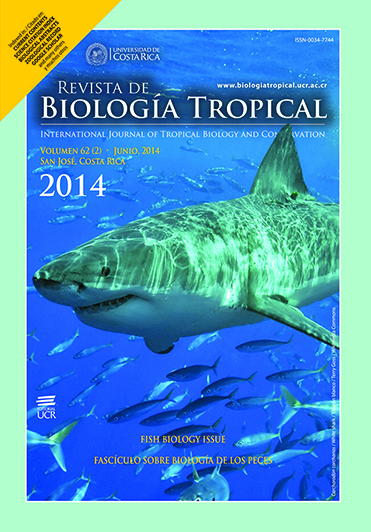Abstract
Oak forest represents an ecologically important plant formation in Colombia, partly due to the large amount of epiphyte flora that harbors, especially non-vascular plants which have been poorly studied in Colombia. One of the biggest oak forests in the country is the one found in the Parque Natural Municipal “Robledales de Tipacoque” (PNMRT), in Boyacá, municipality of Tipacoque. The epiphyte bryoflora was evaluated in Q. humboldtii, using canopy climbing techniques and dividing the trees (25 individuals sampled) each into five layers (base, trunk, inner canopy, middle and outer canopy). A total of 365 samples were collected: 29% liveworts and 71% mosses. Hepatics represented 10 families, 16 genera and 26 species; mosses 11 families, 26 genera and 49 species. Considering the tree layers, the most diverse one was the base with 51 species, followed by the trunk with 43; in the canopy, the inner canopy was found the most diverse with 28 species, and was followed by the middle canopy with 18, and the outer canopy with 15. A species similarity index shows that the trunk and the middle canopy were the most closely related (0.42) in terms of species composition. The results showed that non-vascular plants were mostly found in lower layers (base and trunk), where the diversity was greater, richer (species number), and this might be caused by the microclimatic conditions in these places, such as higher humidity, lower light intensity and shade. Thus, some species are considered shade epiphytes (ombrophiles) because they are unique to these areas, like Bazzania gracilis and Taxilejeunea pterigonia, among others. Likewise, Jungermannia sp. is considered a sun epiphyte (heliophilous) because it is found only in the outer canopy. We concluded that Q. humboldtii could be considered as a potential host for the conservation of non-vascular epiphytes in Colombian forests.##plugins.facebook.comentarios##

This work is licensed under a Creative Commons Attribution 4.0 International License.
Copyright (c) 2014 Revista de Biología Tropical
Downloads
Download data is not yet available.






